© 2002 Ken Glasziou
© 2002 The Brotherhood of Man Library
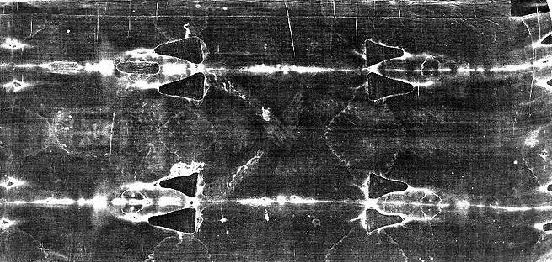
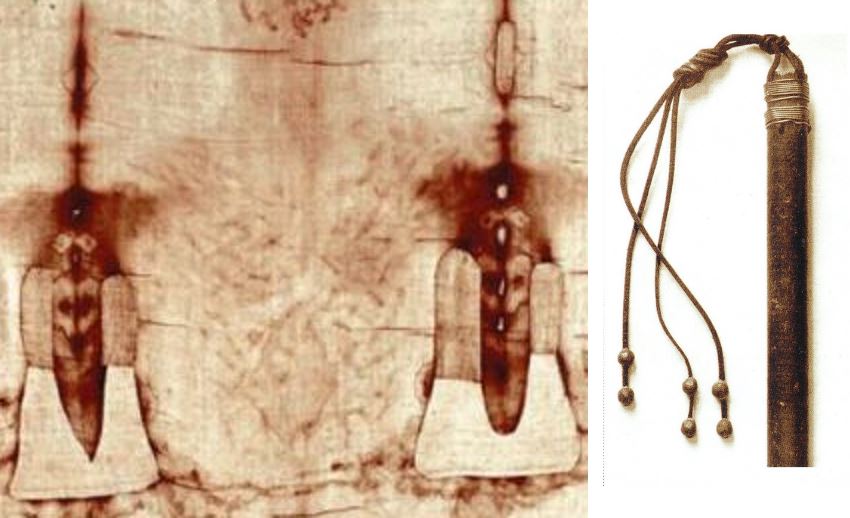
We previously discussed the Shroud of Turin in Innerface Vol. 7, No. 4, concluding that, despite the carbon-dating debacle that labeled it as a medieval fake, it still appeared possible that this famous Christian relic really was the wrapping sheet used by Joseph of Aramathea and Nicodemus during transport of the body of Jesus from the crucifixion site at Golgotha to Joseph’s recently completed tomb close by.
There appears to be little doubt that the figures obtained by the three laboratories selected to do the carbon dating provided accurate information on the ratio of carbon-14 and carbon-12 in the samples (giving 1260-1390 A.D.). However, independent evidence revealed the presence of a hard, varnish-like coating of microbial origin on those samples that could not be removed by the cleaning techniques at the laboratories that did the carbon dating.
Similar coatings have been seen previously on Mayan jade artifacts used in blood letting rituals that, by carbon-dating methodology, made these relics 700 years younger than they were known to be from other evidence.
Further evidence on this topic has now been revealed in a new publication that also provides a highly detailed coverage of the shroud’s history.[1]
At the University of Texas, Professor Mattingly cultured skin bacteria and kept adding them to a 1 gram piece of cloth until the dry weight registered 2.3g. showing that enough contaminant could accumulate to alter the shroud dating enormously. Checks made with non-microbiologists also showed they were unable to correctly pick the contaminated sample.
To get a better grasp of the degree of the effects that contamination can have, if we started with a sample of carbon-14 having 1000 cpm (counts per minute), after 500, 1000, 2000, and 5730 years we would expect the counts remaining to be about 937, 886, 785, and 500 respectively. A 10% by weight contamination with new material at normal steady state activity would introduce another 100 cpm., the effects being worst for the oldest sample, the age of which would be reduced by about 1500 years.
One of the anomalies arising from the carbon-dating fiasco has been the intensity of the dogmatism shown by participants, and their inability to consider alternative scenarios suggested by contrary evidence.
A history of a shroud bearing an image of Jesus can be traced as far back as 30-50 A.D. when it was taken from Jerusalem to Edessa (now Urfa in Eastern Turkey). Here it remained until 943 A.D. when it fell into Muslim hands—but was released on payment of a ransom and then lodged at Constantinople. A painting of it still exists in Hungary done by an artist in 1192 to illustrate the “Pray Manuscript.” It shows the naked body of Jesus laid out as in the Turin shroud, with four fingers and no thumbs on crossed over hands, right hand on top, and also has a distinctive blood stain showing above the right eye as on the original Turin shroud.
The shroud at Constantinople disappeared from the history books following the French-led 4th crusade that resulted in the sacking of Constantinople in 1204. It may then have been in the hands of the Crusader Order of Knights Templar and in the custody of the de Charny family in France. It remained with this family until relinquished by them and installed at Saint Chapelle, Chambery, in 1532. From there it was moved to Turin in 1578.

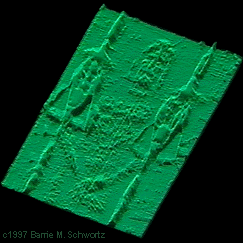
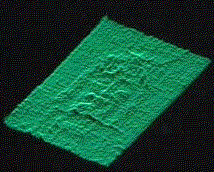
One of the remarkable features of the Turin shroud is what resulted when it was exposed to an image analyzer, called the VP-8. This was developed by NASA to enable shades of black and white to be transformed into levels of vertical height that could be viewed and adjusted on a TV-type screen. When the shroud’s image was placed under this machine the result was a 3-D effect in vertical relief!
Inventor of the machine, electronics engineer Peter Schumacher, remarked: ". . . I had never heard of the Shroud of Turin before that moment. I had no idea of what I was looking at. The results are unlike anything I have processed through the VP-8 Image Analyzer before or since. Only the Shroud of Turin has ever produced those results.
Regarding the concept that a medieval artist might have produced such an image, Schumacher said: “How and why would an artist embed three dimensional information in the gray shading of an image when no means of viewing this property would be available for at least 650 years after it was done. . . and how could the artist control the quality of the work when the gray scale could not be seen as elevation?”
To date the only technique that has come anywhere near giving the shroud’s 3-D effect with a VP-8 analyzer comes from an experiment carried out by Dr August Accetta, a medical practitioner with much experience in the use of autoradiography in diagnostic medicine. For this he used himself as guinea pig, injecting himself with a suitable dose of radioactive methylene diphosphate. With the aid of his wife, he then used a gamma camera to capture the photons derived from gamma radiation coming from his body. The image so obtained was then scanned with the VP-8 Analyzer. The result showed a 3-D effect similar in major details to what was obtained from the Turin shroud but sadly lacking in the fine detail.
This was Dr Accetta’s first trial and no doubt could be improved. It definitely establishes that exposure to radiation can somehow be linked to this 3-D image effect.
Further evidence that is contrary to the Turin shroud being of medieval and European origin is present on samples taken with small strips of sticky tape pressed against the cloth’s surface. This yields copious amounts of plant debris thought to have come from people having placed flowers upon the shroud. Among the debris, professor, Avinoam Danim from the Hebrew University in Jerusalem, an acknowledged expert in the flora of Israel, has identified pollen from three species that grow together only in a twenty mile region between Jerusalem and Hebron.
Of these three, one is Cistus creticus, another Zygophylum dumosum which grows only in Israel, Jordan, and the Sinai, and a third, Gundelia tourneforte, that is distinctively Middle East and absent from Europe and flowers only between March and May, the period in which Jesus was crucified.
Assertions for the shroud being a fake have claimed it is either a painting or else that some unknown person in medieval times invented a pinhole camera plus a method for developing the resulting image on a very large sheet. There is a wealth of evidence against either hypothesis, but little need to repeat it in the face of the 3-D effects obtained with the shroud and NASA’s VP-8 image analyzer. The facts are that nobody has been able to simulate the image on the shroud and retain all its characteristics, not even with the most modern technology.
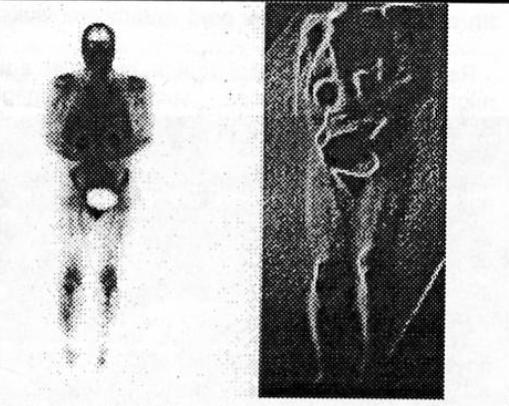

The bloodstains too, are a thorn in the sides of those who cry fake. Recent work has shown the blood and serum goes right through the cloth of the shroud to the other side, something that does not happen with the medieval technique of brushing on iron oxide powder in a gelatin protein base and enhancing the blood color with cinnabar. The shroud’s blood has been analyzed with modern technology and shown to be type A-B. Also demonstrated are DNA sequences that specify genes for both the X and the Y chromosomes, thereby identifying the blood as originating from a male person.
A key question remaining is the method by which the image was transferred to the cloth. The Urantia Book informs us that dissolution of Jesus’ body took place by the natural mode except it was greatly accelerated. The natural mode is microbial-induced decomposition, the final product being carbon dioxide and water—but let’s not forget the bones. Bones do not oxidize in this way. Normally bone decomposition is exceedingly slow dissolution through attack by soil acids. So how was the acceleration of bone and flesh decomposition achieved?
People interested in how an image could be transferred to the linen of the Turin shroud have suggested radiation-induced dematerialization of the body of Jesus may have been the cause, one suggesting neutron bombardment[2], while another suggests “weak dematerialization” associated with spontaneous pion (pi-meson) decay[3].
Perhaps the reality was that some form of radiation was utilized to accelerate the normal decay process? If so and if radiation was required to give the 3-D information that is contained in the shroud image, then perhaps it started soon after Jesus’ body became lifeless, then continued at a slow pace that did not result in excessive heat generation over about 36 hours of entombment prior to the women arriving at the tomb early on Sunday morning.
In our earlier paper we assumed the likelihood that two large covering sheets may have been used by Joseph and Nicodemus, the first during transport of a very dirty body covered with blood and sweat, but a second being used after application of the embalming agents which were bandages soaked in a solution of myrrh and aloes.
If correct, then the first cloth was the one most likely to have received the image of Jesus body because the embalming procedure would effectively have prevented body contact with the cloth. However if radiation was required to transfer the image then direct contact between cloth and body surface may not have been necessary. If so, then probably there was only one covering sheet, otherwise the bloodstains would have been on the first cloth and the body image on the second.
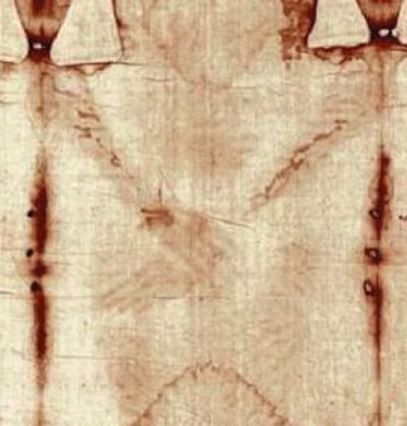
Conclusions: The evidence for the Shroud of Turin being the burial sheet for some male person who had been severely whipped then crucified in a manner corresponding exactly with the description of Jesus’ crucifixion is too strong to ignore. If it is to be pronounced a fake then it must be shown that there is a way by which the faking procedure could have been carried out—and it should be possible to demonstrate that procedure.
Nobody has succeeded in doing this, not even if we do not insist upon them duplicating the 3-D effect obtained with the VP-8 Image Analyzer.
There are a number of possible explanations for the carbon dating debacle—which is obviously wrong though we do not know by how much. Microbial contamination may account for the whole of the 1200 to 1300 year discrepancy if the shroud is the covering sheet used in Jesus’ entombment. But if some kind of radiation methodology was involved in dematerializing the body of Jesus, then it is possible that it also reset the carbon-14 clock (carbon-14 is produced in the upper atmosphere as the product of neutron bombardment of nitrogen-14, neutron capture being followed by proton expulsion to yield carbon-14; nitrogen is a normal constituent of human tissue). Further work is needed to reduce the uncertainties.
¶ External links
¶ References
Wilson, I. and Schwortz, B. The Turin Shroud. The Illustrated Evidence. (Michael O’Mara Books Limited, London, 2000) ↩︎
Phillips, T.J. Letter to the Editor. Nature, (16th February, 1989) ↩︎
Trenn, T. The Shroud of Turin. Resetting the Carbon-14 Clock. Facets of Faith and Science, Vol. 3. (van der Meer, Ontario, 1996) ↩︎